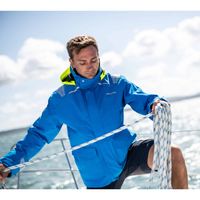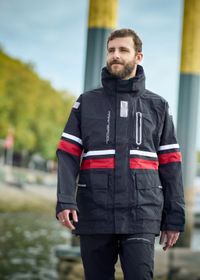Top 5 Features to Look for in Offshore Clothing and Life Jackets
Whether you’re a seasoned sailor, a passionate angler, or someone who loves the occasional weekend boating trip, the right gear can make or break your time on the water. Offshore clothing and high-quality life jackets for maritime professionals are not just practical—they are essential for ensuring both your comfort and safety during every maritime adventure. Imagine being caught in a sudden downpour or unexpected rough seas—without the right clothing to protect you from the elements or a life jacket to keep you afloat, what started as an enjoyable day could quickly turn dangerous.
Tell visitors a little about what this page is about. Be specific: explain why your brand stands out when showcasing products, share #1 reason why you win customers over when sharing reviews, or introduce yourself when you want to communicate brand history and mission.

Offshore clothing in the UAE
Offshore clothing in the UAE is designed to keep you dry, warm, and shielded from harsh conditions, while high-quality life jackets are your ultimate safety net, ready to support you in the event of an emergency. These two pieces of gear are critical for anyone who spends time on open waters, especially maritime professionals who face the elements regularly. Choosing the right equipment can make all the difference in ensuring your safety and comfort. Below, we’ll explore the top five features to look for when selecting offshore clothing and life jackets so you can be well-prepared and enjoy your time at sea with peace of mind. Below, we’ll break down the top five must-have features to look for in offshore apparel and life jackets to help you make the best choice for your next maritime adventure.

Waterproof and Breathable Fabric
One of the most important features to consider when choosing offshore clothing is the material. Offshore conditions can be harsh, with waves crashing and rain pouring unexpectedly. Having clothing made from waterproof yet breathable fabric ensures that you stay dry without feeling suffocated.
For life jackets, ensure that they are made of durable, water-resistant materials that can withstand prolonged exposure to water without deteriorating.
Durability and Reinforced Stitching
Similarly, life jackets should be built with rugged materials that can handle rough conditions. High-quality life jackets often come with reinforced straps and buckles, ensuring that they remain secure even in challenging situations.
Offshore clothing must endure the rigors of maritime conditions, which means durability is key. Look for garments that feature reinforced stitching, particularly in high-wear areas such as the knees, elbows, and shoulders. Offshore activities often involve constant movement, heavy-duty work, and exposure to saltwater, which can quickly wear down poorly made clothing.
High Visibility and Reflective Elements
Safety on the water is paramount, and high visibility is crucial when you’re in offshore environments, especially in low-light or foggy conditions. Offshore clothing with bright colors like neon yellow, orange, or red increases your visibility and makes it easier for others to spot you in case of emergencies.
Life jackets, in particular, should always have high-visibility colors and reflective materials. In the event of an emergency, being easily seen by rescuers can mean the difference between life and death. Some life jackets even have built-in safety lights or whistle attachments to improve visibility and signalling during emergencies.
Ergonomic Design and Fit
Comfort is key when you’re spending hours on the water, and that’s where ergonomic design and a good fit come into play. Offshore clothing should allow for easy movement, whether you're hoisting sails, casting a fishing line, or simply navigating the deck. Look for clothing that features articulated arms, knees, and adjustable closures, ensuring the gear moves with your body instead of restricting it.
An adjustable fit is equally important in life jackets. Ensure the life jacket has adjustable straps at the shoulders, chest, and waist, allowing for a snug fit that won’t shift during use. A well-fitted life jacket is more comfortable and provides better buoyancy support, keeping you afloat in the water more effectively.
Insulation and Layering Capabilities
For life jackets, ensure that the design accommodates wearing over multiple layers of clothing without compromising comfort or buoyancy. Some life jackets even offer thermal protection, which can be a lifesaver in cold water, helping reduce the risk of hypothermia.
Offshore environments can be unpredictable, with temperatures fluctuating rapidly. Proper insulation in your offshore clothing is critical to staying warm, especially during long periods at sea. Look for clothing with built-in thermal layers or the ability to layer easily underneath without causing bulkiness. Fleece-lined jackets, insulated trousers, and base layers designed to trap body heat are essential for colder climates or night-time activities.
Conclusion
When it comes to offshore activities, the right gear can make all the difference in ensuring safety and comfort. High-quality offshore clothing and life jackets are more than just a luxury; they’re essential for protecting you from the elements and unforeseen accidents. By focusing on waterproof and breathable fabrics, durability, high visibility, ergonomic design, and insulation, you’ll be well-prepared for any challenges the sea may throw your way.
